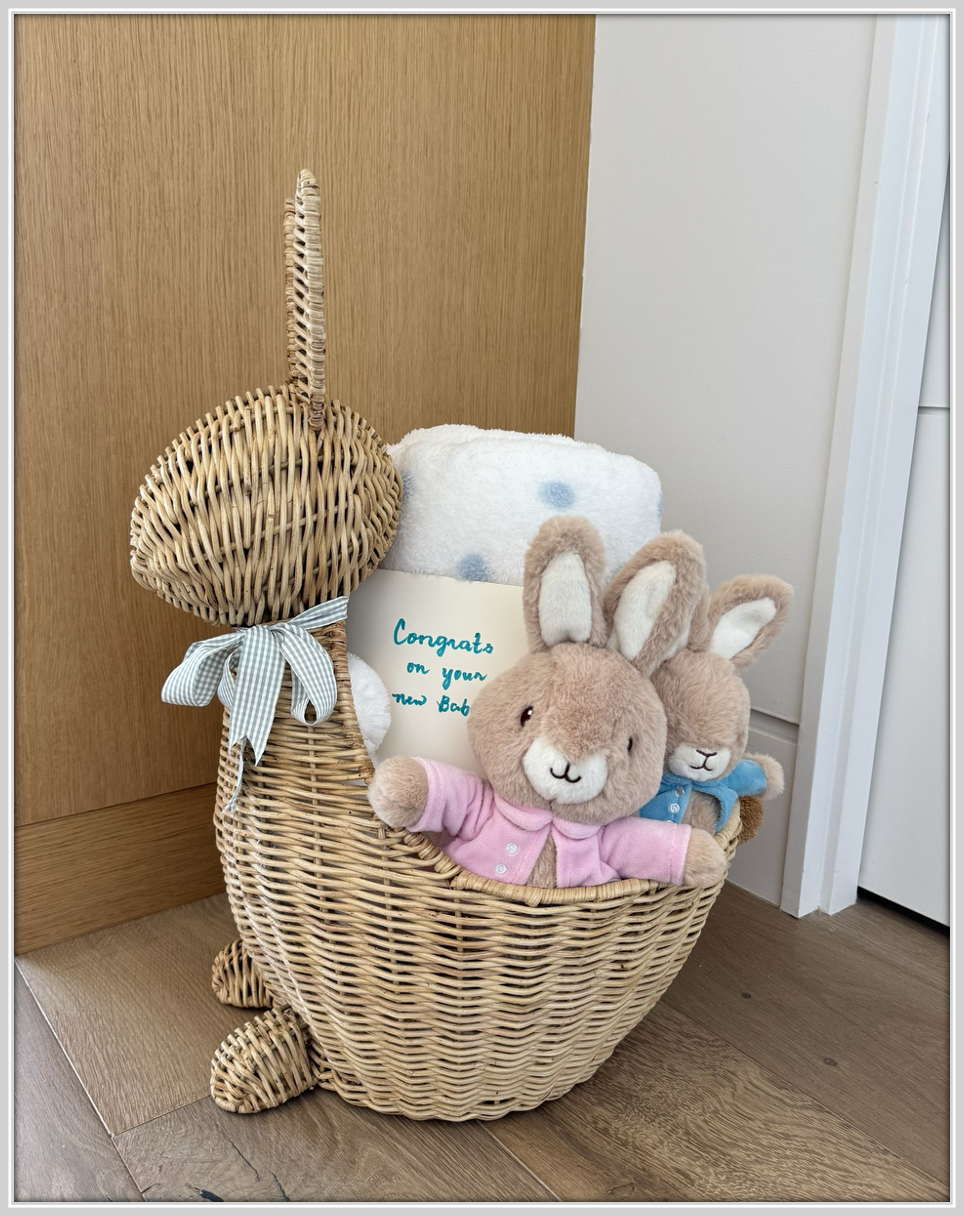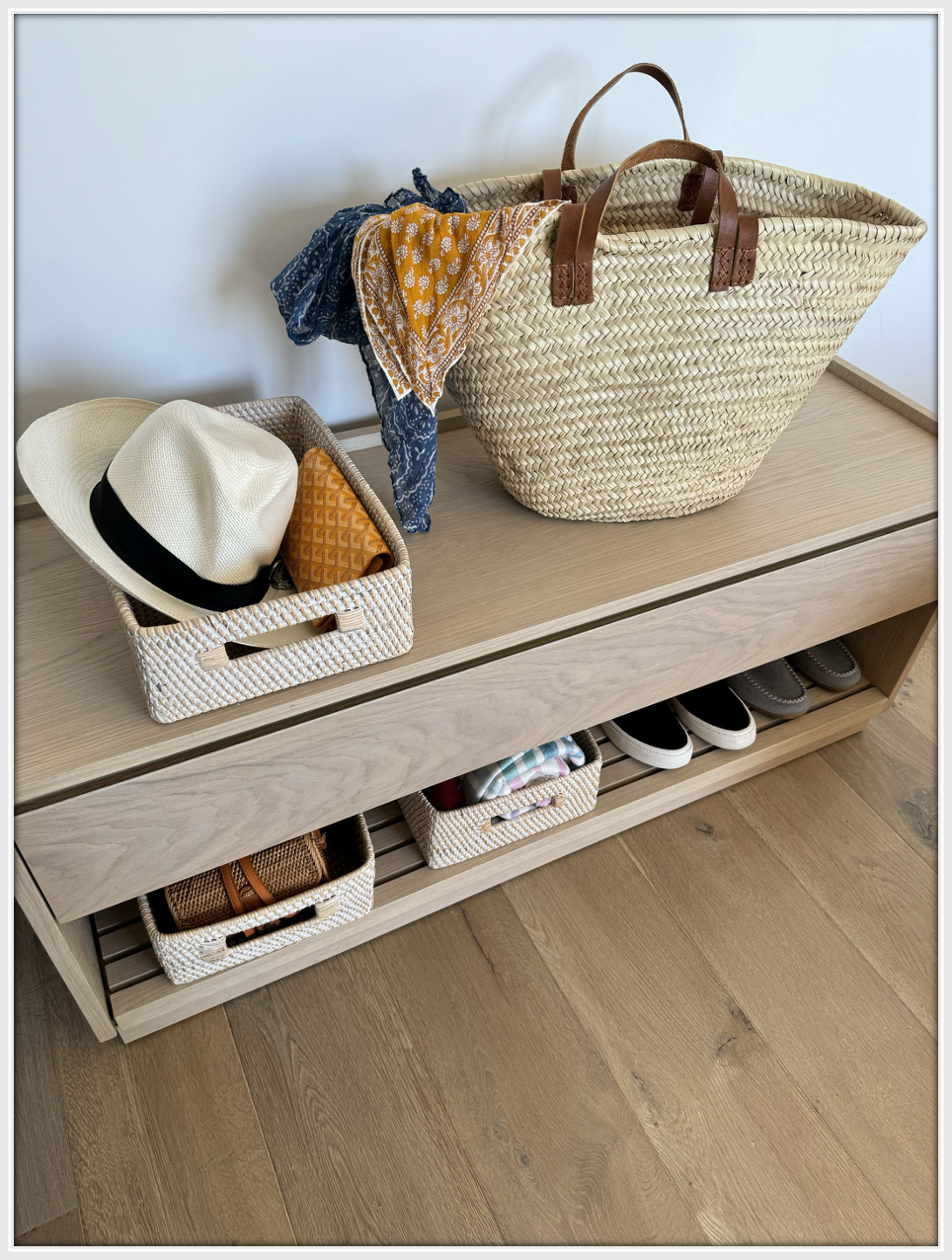Source: KOUBOO
Whether you’re reaching for a glass of water in the middle of the night or stowing a paperback to continue tomorrow, your nightstand serves a bigger role than it often gets credit for. That said, determining the optimal nightstand size and dimensions can often be an afterthought. A well-suited nightstand not only makes your bedroom more comfortable and functional; it also makes the entire space more cohesive.
In this guide, we delve deep into the art and science of choosing the right nightstand, an essential piece of bedroom furniture, for your space, from explaining the standard nightstand dimensions to how different sizes can be used optimally in different bedroom styles and configurations.
Height
The right height of a nightstand is crucial for both functionality and comfort. Ideally, a nightstand should be about the same height as the top of your mattress. This makes it easy to reach for anything from your eyeglasses to your alarm clock without having to stretch or bend awkwardly.
Short / Low
- Height Range: 18 to 20 inches
- Ideal For: Platform beds, low-profile mattresses, minimalist bedroom styles. Low nightstands keep the room looking uncluttered and are best for smaller spaces or lower beds.
Standard Height
- Height Range: 24 to 28 inches
- Ideal For: Most standard bed heights. This range complements the common mattress and box spring combinations, ensuring everything is within easy reach from the bed.
Tall
- Height Range: 28 to 30 inches
- Ideal For: Beds with pillow-top mattresses or those set on high bed frames. Tall nightstands are also beneficial for rooms with high ceilings as they help balance the scale of the space.
Extra-tall
- Height Range: 30 to 32 inches or more
- Ideal For: Very high beds or those where the mattress sits significantly above the bed frame. These can also serve as a statement piece in larger bedrooms.
Width

Source: Style by Emily Henderson
The width of a nightstand affects not only storage capacity but also how it fits into your room's layout.
Narrow
- Width Range: 18 inches or less
- Ideal For: Smaller bedrooms or tight spaces. A narrow nightstand can offer functionality without taking up much floor space, making it perfect for minimalists.
Standard Width
- Width Range: 20 to 24 inches
- Ideal For: Most bedroom sizes. This width provides ample surface area for essentials like lamps, books and glasses, without overwhelming the space.
Wide
- Width Range: 24 inches and above
- Ideal For: Larger bedrooms or for those who need more storage or display space beside the bed. Wide nightstands can balance bigger beds or heavier decor elements.
Depth

Source: Angela Marie Made
Considering the depth of a nightstand is important to ensure it doesn't protrude too much into the room or look disproportionately small.
Shallow
- Depth Range: 12 to 15 inches
- Ideal For: Very small rooms or when placed next to a narrow walkway. Shallow nightstands help maintain a clear, open feel in the room.
Standard Depth
- Depth Range: 16 to 20 inches
- Ideal For: Most bedrooms. This depth allows for sufficient storage and surface area without taking up too much floor space.
Deep
- Depth Range: 20 inches or more
- Ideal For: Larger bedrooms with ample space. Deep nightstands offer extensive storage and can accommodate larger decorative items or essential electronics.
Additional Nightstand Tips & Considerations
-
Room Walkability: Maintaining at least 24 inches of walking space around the nightstand ensures the room doesn't feel too cramped. For smaller spaces, consider a nightstand with rounded corners to minimize the risk of bumps and bruises in tight walkways. Proper spacing also contributes to a smoother flow in the room, making it easier to navigate in the dark or when you're in a hurry.
-
Custom Sizes: Custom-built nightstands are a worthwhile consideration if your bedroom has unique dimensions or you have specific storage needs that off-the-shelf products can't meet. Custom options allow you to select materials and finishes that perfectly match your existing decor. Additionally, they can be designed to incorporate features like built-in charging stations or hidden compartments.
-
Ergonomics & Accessibility: The ideal nightstand height makes it easy to reach from the lying position without having to stretch or strain. If you read in bed, consider a nightstand with space for storing books and magazines within arm’s reach. Adjustable shelving within the nightstand can also be beneficial, allowing you to customize the storage to fit different item heights comfortably.
-
Adjustable Size Options: Some nightstands come with adjustable features, such as extendable shelves or adjustable heights, which can be particularly useful for multi-use spaces or guest rooms where the furniture needs may change based on different users or different bed heights. Look for models that offer modular components that can be reconfigured as needed.
-
Leg Height: Nightstands with higher legs offer several benefits. They are easier to clean underneath, can make smaller rooms appear larger by providing a more open feel, and they allow for more light to pass through the space, which can contribute to a lighter and airier ambiance. High legs can also be a stylistic choice, complementing modern and Scandinavian interiors effectively.
-
Recommended Lamp Size: When selecting a lamp for your nightstand, consider both the size of the lamp and its light output. The lamp should not only fit proportionally on the nightstand but also provide adequate lighting for reading or other activities without being too harsh or glaring. Opt for lamps with adjustable brightness or those compatible with smart bulbs to customize light levels according to your needs.
-
Visibility and Reach: Organize the top of your nightstand by priority of use. Essentials like a clock, lamp, or your glasses should be within easy reach. Consider decorative elements that are both functional and enhance the room's aesthetic, such as a small vase or a framed photo. Drawer organizers can be a great addition to keep everything in place and easily accessible, especially for items used less frequently.
-
Integration with Technology: As technology becomes an integral part of our lives, consider a nightstand that incorporates tech-friendly features. This includes built-in USB ports or wireless charging pads, cable management systems to keep charging cables neat and even nightstands with built-in speakers or ambient lighting that can be controlled via smartphone.
-
Material and Finish: The material and finish of your nightstand can dramatically affect both its look and durability. Choose materials that complement the wear and tear of daily use. For instance, solid wood provides durability and classic appeal, whereas metal can offer a sleek, contemporary look. Natural rattan, our personal pick, complements many aesthetics and offers the space a warm, organic vibe.

Source: KOUBOO
Choosing the right nightstand is more than picking a piece that looks good beside your bed. Its dimensions should facilitate ease of use, complement the scale of the room and meet your functional needs. Whether you opt for a standard size or a custom piece, understanding the interplay of height, width and depth will help you make the most of this essential bedroom furniture.









